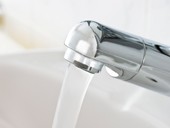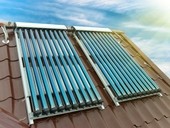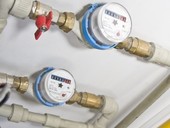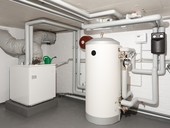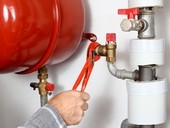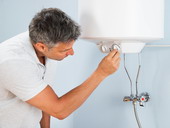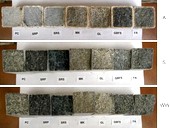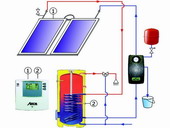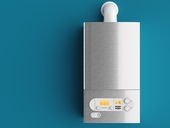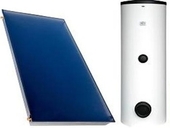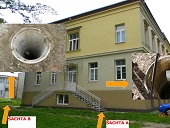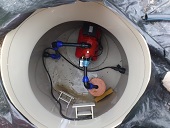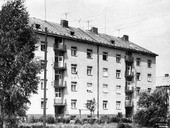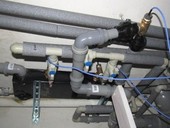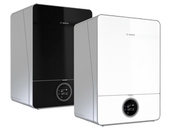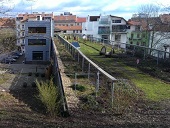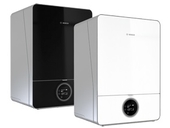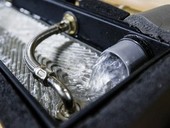Sulfate attack is one of the major threats for durability of concrete in sewage collection systems where concrete sewer pipes are exposed to sulfates from waste water as well as from biogenic activity of bacteria. Damage due to sulfate interaction can result in the cracking and softening with loss of strength of concrete and it may lead to the concrete desintegration. Gypsum is the primary product of sulfate attack on concrete, after which ettringite is subsequently formed. Ettringite and gypsum are considerably larger in volume than the initial compounds, which leads to increased pressure within the concrete structure. This paper is focused on the sulfate attack on fine-grained concrete where the effect of 12 months contact of 0.5% sulfuric acid, simulating biogenic sulfuric acid corrosion, 5% sodium sulfate solution and solution simulating sewage water on various types of concrete has been investigated. The concrete specimens were characterized after exposition to the corroding media by their mechanical parameters, changes in pH and content of sulfates. It was found that after one-year exposure to sulfuric acid solution, the compressive strengths of all types of concrete significantly decreased. Sodium sulfate solution and the artificial waste water did not represent the significant corrosion environments for the concretes in terms of their strength reduction, increasing of sulfate ions content and the reduction in the pH of their aqueous leaches. The fine-grained concretes containing metakaolin and ground limestone showed the highest coefficient of corrosion resistance for the applied corrosive solutions.
